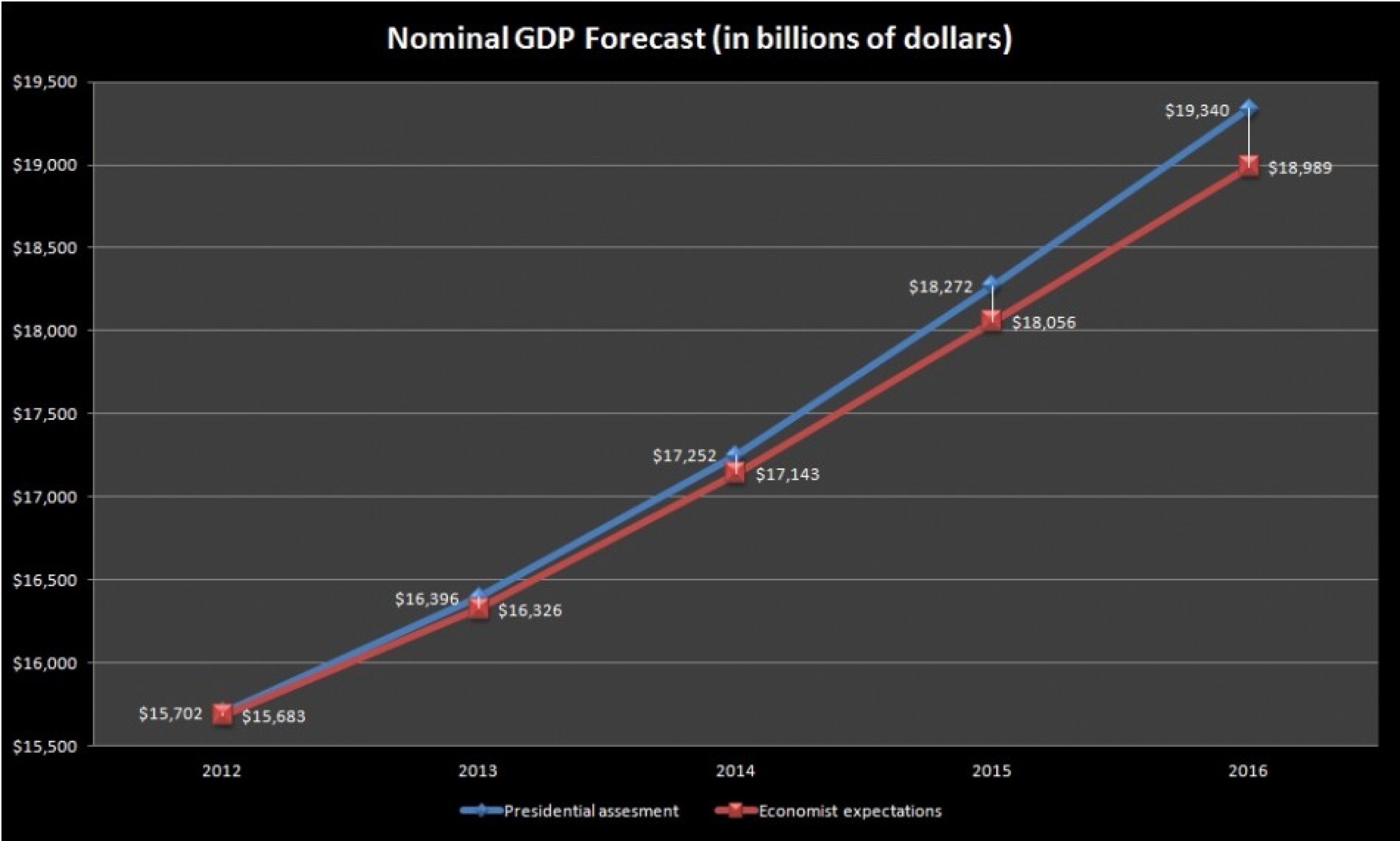White House Numbers On GDP Growth Optimistic Even By White House Standards
Mere hours after the White House released its official assessment on the future of the U.S. economy Friday, as part of its mid-session review of the federal budget for 2013, economists, policymakers and pundits from the other side of the political spectrum began attacking the numbers as highly optimistic and out of line with expert consensus.
That kind of reaction is expected in Washington.
But there is one voice that, uncharacteristically, seemed to be agreeing with those assessments of the numbers: the White House itself.
By the end of a possible second Obama administration, in 2016, the report released Friday said U.S. GDP will be $19.34 trillion, a jump of nearly 18 percent from the total economic output seen in 2011. Inflation will be close to its current low levels, while unemployment will be at an enviable 6.0 percent rate, the prediction states.
But the same report admitted that the assumptions of expert private-sector economists were much less rosy than those being taken into account by the White House. Specifically, the average prediction of 50 economic forecasts sees U.S. GDP growing to $18.98 trillion, a gap of $351 billion from presidential views. Private economists, according to the report, see the economy growing at a compounded 14.02 percent rate by the end of 2016, a far cry from the 17.73 percent rate predicted by the White House. Indeed, economists basically expect the economy to grow as much by the end of 2016 as the president’s budget team sees it growing by the end of 2015.
As the Committee for a Responsible Federal Budget, a Washington think tank, told Reuters, “these estimates may turn out to be overly optimistic.”


© Copyright IBTimes 2024. All rights reserved.











